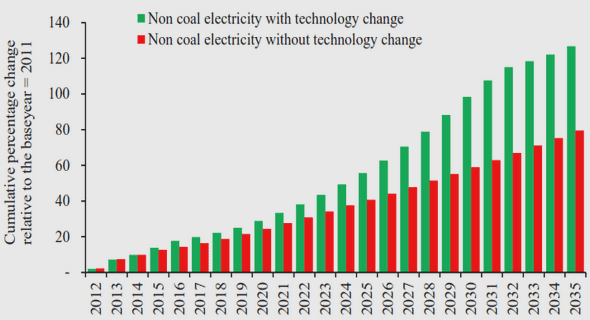(Downloads - 0)
For more info about our services contact : help@bestpfe.com
Table of contents
Introduction
1 State of the art
1.1. Food packaging interactions
1.1.1. Mass Transfer of small organic molecules through polymers
1.1.2. Sorption
1.1.2.1. Henry’s law sorption
1.1.2.2. Langmuir mode sorption
1.1.2.3. Dual sorption model
1.1.2.4. Flory-Huggins model
1.1.3. Diffusion
1.1.4. Factors affecting aroma transport in packaging materials
1.1.4.1. Factors related to packaging
1.1.4.2. Factors related to aroma compounds
1.1.4.3. Factors related to food matrix
1.1.4.4. Factors related to environment
1.2. Methodology
1.2.1. Quantification of the VOCs and aroma compounds into polymer
1.2.1.1. Methods of extraction using solvents
1.2.1.2. Methods using volatility of molecules
1.2.1.3. Determination of transport coefficients
1.3. PLA
1.3.1. Structure
1.3.2. PLA Properties
1.3.3. Solubility
1.3.4. Barrier properties
1.3.5. Microstructure
1.3.6. PLA thermal degradation
1.3.7. Additives in PLA
1.3.8. Food packaging applications of PLA
2 Materials and Methods
2.1 Materials
2.1.1 Polymers
2.1.2 Aroma compounds
2.1.3 Reagents
2.1.4 Solvents
2.1.5 Sponge cakes
2.1.6 Food emulsions
2.2 Methods
2.2.1 Procedures of PLA conditioning
2.2.1.1 Conditioning of PLA samples in aroma atmosphere
2.2.1.1.1 Determination of the aroma partial pressure by gas chromatography
2.2.1.2 Conditioning of sponge cakes in PLA pouches
2.2.1.3 Conditioning of PLA samples in rapeseed oil
2.2.1.4 Conditioning of emulsion in PLA trays
2.2.1.4.1 Characterization of emulsions
2.2.2 Moisture loss and water vapor transfer rate (WVTR)
2.2.3 Partition coefficients
2.2.4 Solubility coefficient
2.2.5 Extraction methods
2.2.5.1 Headspace extraction methods
2.2.5.1.1 MHE: Quantification of aroma compounds
2.2.5.1.2 Multiple headspacesolid-phase micro extraction (MHS-SPME)
2.2.5.1.2.1 Quantification of aroma compounds
2.2.5.1.2.2 Sampling procedure for VOCs quantification
2.2.5.1.2.3 Sampling procedure for lactide quantification
2.2.5.1.2.4 Identification by GC-MS
2.2.5.1.2.5 Limit of detection and quantification
2.2.5.2 Liquid extraction methods
2.2.5.2.1 Quantification of oil sorbed in PLA
2.2.5.2.2 Quantification of residual lactide
2.2.5.2.3 Solvent extraction of additives in PLA
2.2.5.2.3.1 Dissolution by reflux – Precipitation
2.2.5.2.3.2 Dissolution by ultrasound– Precipitation
2.2.5.2.3.3 Ethanol extraction by ultrasounds
2.2.5.2.3.4 Analysis by GC-MS
2.2.6 PLA characterization techniques
2.2.6.1 Size Exclusion Chromatography (SEC)
2.2.6.2 Differential scanning calorimetry (DSC)
2.2.7 Statistical analysis
3. Plasticization of poly(lactide) by sorption of volatile organic compounds at low concentration (Publication Nº 1).
3.1. Abstract
3.2. Introduction
3.3. Materials and methods
3.4. Results and Discussion
3.5. Conclusion
4. Sorption of oil and aroma compounds from model foods in poly(lactide)
4.1 Sorption of aroma compounds from flavored sponge cakes in poly(lactide)
4.1.1 Moisture loss and water vapour transfer rate (WVTR)
4.1.2 Quantification of sorbed aroma compounds in pouches and films of PLA by MHS-SPME.
4.2 Sorption of oil and aroma compounds from model food emulsions in poly(lactide) (Publication Nº 2).
4.2.1 Abstract
4.2.2 Introduction
4.2.3 Materials and methods
4.2.4 Results
4.2.5 Conclusion
5 Identification and quantification of additives, lactides and volatile organic compounds (VOCs) in PLA.
5.1 Deformulation of PLA (Publication Nº 3).
5.2 Quantification of lactides in PLA
5.2.1 Quantification of lactides in PLA by the method of NatureWorks
5.2.2 Quantification of lactides by MHS-SPME
5.2.2.1 Optimization of MHS-SPME
5.2.2.2 Lactide quantification
5.3 Identification and quantification of VOCs in PLA by HS-SPME
5.3.1 Identification of VOCs
5.3.2 Optimization of MHS-SPME
5.3.2.1 SPME fibre
5.3.2.2 PLA amount and incubation temperature
5.3.3 Quantification of VOCs in PLA
Conclusions and perspectives
Annexes
References




